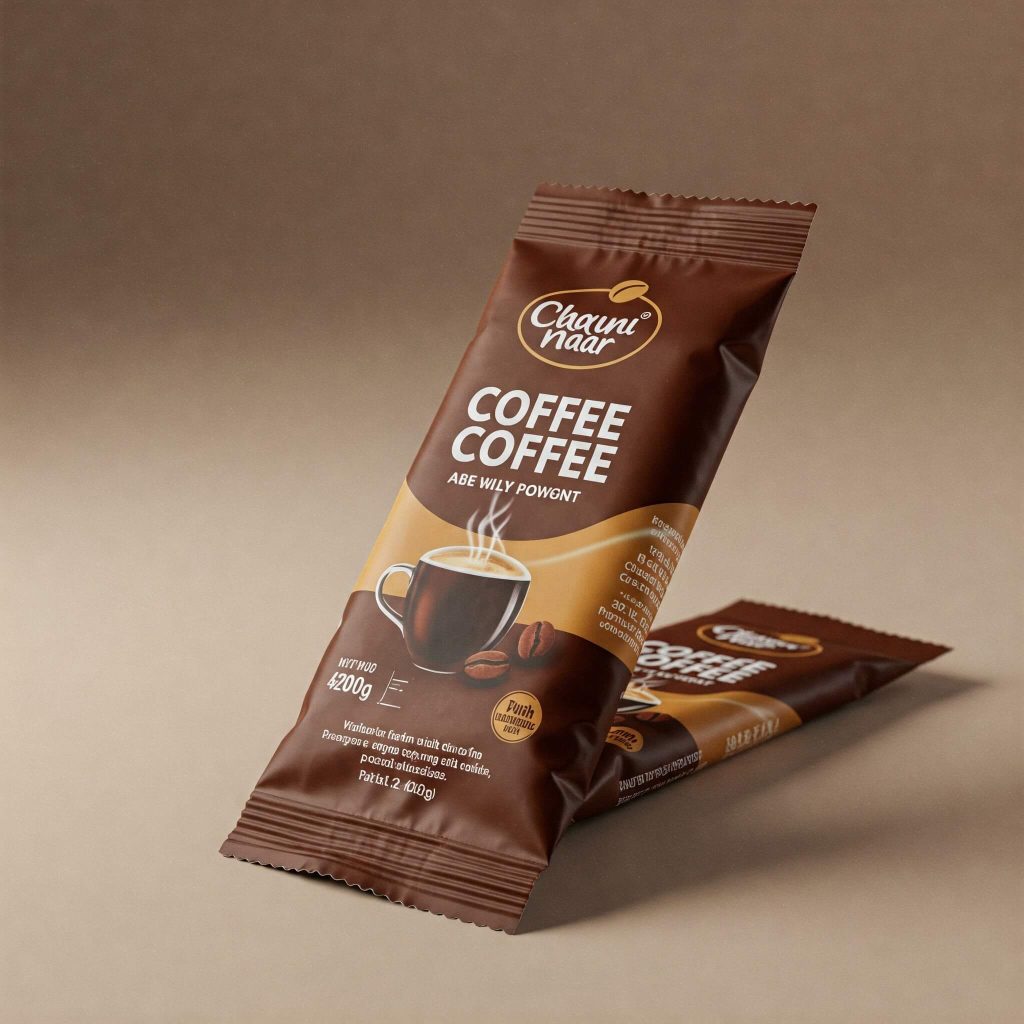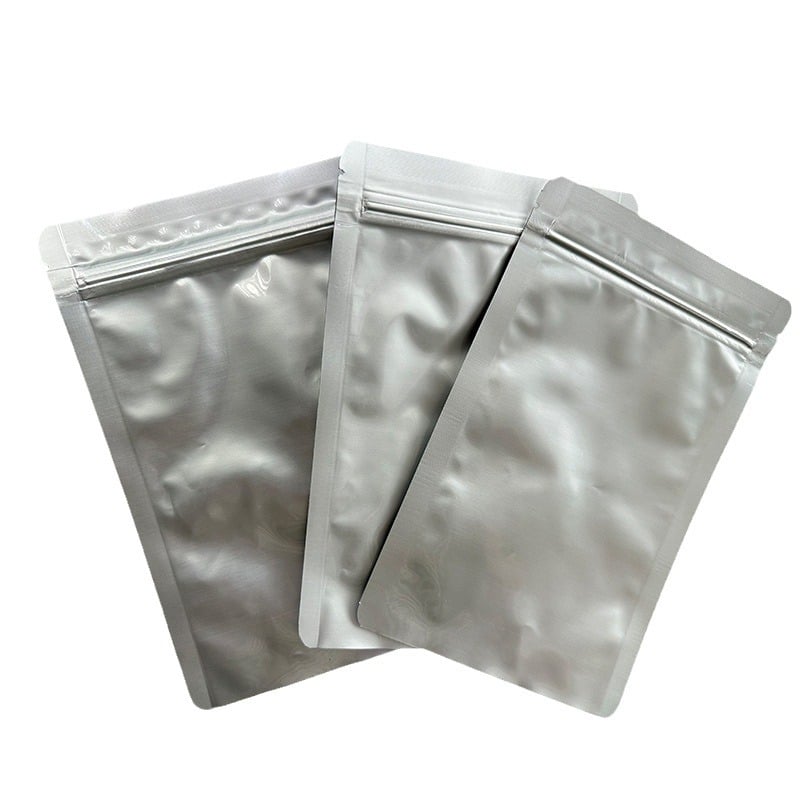Key Definitions of Biodegradable Films
Biodegradable Film: Biodegradable, renewable, eco-friendly plastic film.
It can degrade fast and securely without producing toxins.
They are produced from compostable corn starch, sugar cane, or cellulose.
These films are ecological alternatives to plastic packaging and can be used to package food and industrial supplies.
It is mainly utilized in supermarket shopping bags, rubbish bags, agricultural mulching films, etc.
What Makes a Film “Biodegradable”?
A film is considered “biodegradable” if it fits three criteria:
1.Scientific Definition:
Disintegrate into non-toxic components (e.g., water, CO₂, methane) by microbial activity. It mimics natural breakdown, leaving no hazardous leftovers.
2. Certified Degradation Rate:
Biodegradable films must meet ASTM D6400 standards of 90% breakdown within 180 days in industrial composting conditions. Compliance with this standard precludes “greenwashing.”
3 .No Special Handling Required:
Unlike “oxo-degradable” polymers, biodegradable films break down without light, oxygen, or mechanical stress. They operate in landfills, soil, or marine habitats, with industrial composting accelerating the process.
Bonus: FDA-approved biodegradable films are safe for food contact and free of heavy metals, benefiting consumers and ecosystems.
Material Components of Biodegradable Films
Renewable resources or modified traditional plastics are used to create biodegradable films.
Common polymers include starch-based films (e.g., corn, potato), which are cost-effective but weaker than petroleum-based plastics, nevertheless frequently utilized. Suitable for short-term packaging like supermarket bags.
PLA, made from fermented plant polysaccharides like corn starch, is a strong and heat-resistant material for food containers and agricultural films.
Derivatives of Cellulose:
Films made from wood pulp or cotton are transparent, compostable, and commonly used in pharmaceutical packaging.
Polyester Blends (PBAT/PBS): These blends are strong and flexible, mimicking traditional plastic’s durability while decomposing harmlessly.
Functional Additives:
Antioxidants prolong shelf life by inhibiting oxidation, which is commonly seen in snack packaging.
Antimicrobial Agents: Prevent bacterial growth, suitable for medical wrapping or meat packaging.
Nucleating Agents: Enhance clarity and mechanical strength in cling wrap.
According to industry data, the global biodegradable film market is expected to increase from ∗1.1 billion in 2020 to ∗1.5 billion by 2025 (CAGR 6.6%), driven by demand from the food and agriculture industries.
PLA films dissolve in compost in 3-6 months, but starch mixes may take up to a year in commercial settings.
Biodegradable films solve plastic pollution by combining science and sustainability. Their safe decomposition and constant improvements underpin the circular economy.
Biodegradable films solve plastic pollution by combining science and sustainability. Their safe decomposition and constant improvements underpin the circular economy.
How Biodegradable Films Work
Introduction
Biodegradable films are designed to decompose into innocuous components such as water, carbon dioxide, and organic waste. While typical polymers can take decades to dissolve, these films degrade in months to years under certain conditions. They function like this.
the degradation process.
Biodegradable films disintegrate via microbial action and environmental stimuli. The process is as follows:
Microbial Activity: Bacteria and fungi release enzymes that break down polymer chains in the film.
For instance, bacteria speed up industrial composting.
Environmental Triggers:
Industrial composting requires temperatures above 58°C to accelerate enzyme activity.
Humidity stimulates bacteria and dissolves film.
Most films decay in aerobic conditions (with oxygen), while some can degrade anaerobically (without oxygen).
factors affecting the degradation rate are discussed.
The rate of biodegradable film breakdown depends on the material type and environment:
Material Type: Starch-based films (e.g., corn or potato starch) decompose in 6-12 months under industrial composting conditions.
Polylactic acid (PLA) degradation can take 1–2 years, necessitating industrial facilities.
Environmental Conditions:
Composting in Industry: Improved heat, humidity, and microbial activity promote deterioration.
Home composting is slower due to lower temperatures and unpredictable circumstances.
Film degradation varies by soil type, with some films lasting longer in dry or cold soils.
Most biodegradable films decompose poorly in oceans due to low temperatures and the absence of bacteria.
Certification Standards Real biodegradability requires films to meet high international standards:
ASTM D6400 (USA): Films must degrade 90% within 180 days in industrial composting facilities.
EN 13432 (EU): Has comparable criteria, requiring complete disintegration after 6 months.
The U.S. Composting Council (BPI) certifies films for industrial composting processes.
False and misleading claims Alert:
The EU has banned “oxo-degradable plastics” (plastics containing additives for quicker breakdown). The European Commission Report (2023) found that these plastics fracture into microplastics instead of biodegrading.
Key Industry Data Carbon Footprint:
Biodegradable films emit 30-50% less than standard plastics during production (European Bioplastics, 2024).
Cost: 20-30% costlier than typical plastics but decreasing as demand rises (Global Market Insights, 2024).
The global biodegradable film market is expected to reach $1.5 billion by 2025, led by food packaging and agriculture (Industry Analysis, 2024).
Advantages of Biodegradable Films Over Traditional Plastics
Biodegradable films offer a sustainable alternative to traditional plastics, addressing environmental, functional, and economic challenges. Here’s why they’re superior:
Environmental Benefits
Biodegradable films drastically reduce ecological harm compared to conventional plastics:
Reduce Reliance on Fossil Fuels:
They cut dependence on finite oil reserves and make them from renewable biomass (e.g., corn starch, sugarcane).
Example: PLA (polylactic acid) is derived entirely from plant sugars.
Carbon Neutrality:
Lifecycle emissions are 80% lower than traditional plastics (European Bioplastics Report, 2023).
During decomposition, they release only CO₂ and water, unlike plastics, which emit methane (a 25x more potent greenhouse gas).
Eliminate Microplastics:
Break down into harmless organic matter, avoiding microplastic pollution in oceans and soil.
Traditional plastics shed 10–20 million tons of microplastics annually (National Geographic, 2022).
Functional Advantages
Biodegradable films outperform traditional plastics in key applications:
Food Packaging:
Extend Shelf Life: Permeable films regulate oxygen/carbon dioxide levels, keeping produce fresh 2–3× longer.
Example: Modified atmosphere packaging (MAP) delays ripening in strawberries by 14 days (Food Packaging Trends, 2024).
Antimicrobial Coatings: Films embedded with nanosilver or essential oils inhibit bacteria like E. coli, reducing foodborne illnesses.
Agriculture:
Biodegradable Mulch Films: Replace plastic tarps, improving soil health and eliminating cleanup costs.
Studies show that maize yields increased by 15% with biodegradable film (Agricultural Research Journal, 2023).
Seedling Covers: Compost directly into the soil, enhancing moisture retention and root growth.
Economic & Regulatory Advantages
Market shifts and policies favor biodegradable films:
Policy Momentum:
Global Bans: Over 60 countries (e.g., EU, Canada, India) restrict single-use plastics, driving demand for alternatives.
Incentives: Tax breaks for businesses adopting compostable packaging (World Economic Forum, 2024).
Cost Efficiency:
Prices have dropped 30% in 5 years due to scaled production, rivaling traditional plastics.
Industrial Uses of Biodegradable Films
By replacing plastics with biodegradable films, industries are changing. These films degrade naturally through microbial action, reducing environmental damage and retaining usefulness
Food Industry
Biodegradable films change food packaging by integrating sustainability and practicality.
Fresh Produce Packaging: – Moisture and Oxygen Control: Films restrict gas exchange to slow ripening. Modified atmospheric packaging (MAP) can increase strawberry shelf life by 14 days (Food Packaging Trends, 2024).
For instance, starch-based films minimize leafy green food waste by 25% (WRAP, 2023).
Meat Packaging: Oxygen Barrier PLA sheets prevent spoiling by blocking oxygen. Beef in biodegradable film retains freshness 2-3 times longer than regular plastics (Journal of Food Science, 2022).
The films used for coffee capsules and tea bags are heat-resistant and do not release pollutants. Nestlé’s biodegradable tea packets degrade in 60 days (Nestlé Sustainability Report, 2023).
Agriculture and Horticulture
Farmers and farmers use biodegradable films to increase output and reduce waste.
Mulch films offer weed suppression and moisture retention, reducing water loss by 30-50% and weed growth by 90-90%. Trials showed a 15% improvement in maize yields (Agricultural Research Journal, 2023).
Coverings for greenhouses:
UV Resistance: Modified films retain heat and prevent harmful light. Greenhouses with biodegradable coatings increased agricultural yields by 20% in colder climates (Greenhouse Grower, 2024).
Seed Coatings:
Improved Germination: Films enhance soil contact and nutrient delivery. In rice paddies, biodegradable seed coverings increased germination rates by 10-15% (Nature Sustainability, 2022).
Medical & Consumer Goods
Biodegradable films meet safety and sustainability requirements.
After surgery, polylactic acid (PLA) films break down harmlessly, minimizing infection concerns. The global biomedical film industry is expected to reach $14.5 billion by 2028 (Grand View Research, 2023).
Medical Gear for Single Use:
Masks and Gowns: PLA-coated masks decompose in 90 days, while conventional plastics take 450 years (WHO Guidelines, 2023).
Packaging for consumers:
Shampoo Bottles: Biodegradable PET alternatives, like Danone’s, degrade in 1-2 years by industrial composting (Danone Sustainability Report, 2023).
Key Industry Data
Biodegradable packaging reduces global food waste emissions by 11% (UNEP, 2022).
Cost Parity: PLA film (0.12–0.15/lb) now competes with PE polymers (Statista, 2024).
The EU’s Farm to Fork Strategy requires 30% biodegradable agricultural packaging by 2030 (EU Commission, 2023).
Biodegradable Film Challenges and Limitations
Although biodegradable films are eco-friendly, they confront substantial barriers to broader implementation. Technical, logistical, and regulatory issues require new solutions for wider application.
Technical Obstacles
Despite progress, biodegradable films face intrinsic limitations:
Harsh Degradation Conditions:Inefficient Home Composting: Most films need industrial composting (58°C+ heat) for degradation, leaving backyard setups ineffective. For instance, PLA films disintegrate under optimum conditions in 1-2 years but remain in landfills indefinitely (European Bioplastics, 2023).
Water Resistance: High water vapor transmission rates weaken barrier characteristics, restricting application in moist situations like food packaging.
A mechanical weakness:
Lower Tensile Strength: Starch-based films are more prone to tearing than HDPE. PLA films have 20-30% reduced puncture resistance, increasing product damage during shipping (Packaging Digest, 2024).
Barrier Performance Gaps:
Oxygen Permeability: Biodegradable films allow higher gas exchange, shortening the shelf life for oxygen-sensitive products like nuts or coffee (Food Technology, 2023).
Supply Chain Hurdles
Scaling production faces systemic obstacles:
Raw Material Competition:
Food vs. Fuel Debate: Crops like corn and sugarcane compete with food production. In 2023, 15% of global corn supply was diverted to bioplastics, raising ethical concerns (World Bank, 2024).
Recycling Infrastructure Conflicts:
Incompatible Systems: Existing PET recycling lines cannot process biodegradable films, leading to contamination. The EU reports a 20% increase in rejected recyclables due to mixed plastics (EU Circular Economy Report, 2023).
Certification Costs:
Expensive Testing: Third-party certifications (e.g., ASTM D6400) cost 2,000–5,000 per batch, pricing out small producers (Sustainable Packaging Coalition, 2024).
Regulatory Risks
Unclear guidelines hinder market growth:
Outdated Standards:
Emerging Materials Gap: New blends (e.g., PBAT + starch) lack standardized testing methods, delaying approvals. The FDA only recently updated rules for biodegradable medical devices in 2023 (FDA, 2023).
Greenwashing Crackdowns:
EU Bans Misleading Claims: In 2023, the EU fined companies €1.2 million for false “compostable” labels on non-compliant films (EU Consumer Protection, 2023).
Global Inconsistency:
Varied Degradation Rules: The U.S. lacks federal standards, while China requires 90% biodegradation in 180 days—stricter than the EU’s 6-month mandate (Global Plastics Treaty Draft, 2024).
Biodegradable Films: Future Outlook
Biodegradable films must overcome technical hurdles, capitalize on market demand, and meet global sustainability goals. Fast breakthroughs and governmental changes will spur industry adoption.
Technological Innovations
Innovations improve performance and extend applications:
Scientists are genetically altering crops like corn and sugarcane to increase starch yields and lower raw material costs by 25% (Nature Biotechnology, 2023).
Example: Packaging films made from CRISPR-modified potatoes are stronger and more flexible.
Adding graphene or clay nanoparticles to nanocomposite materials increases tear resistance. Films using graphene demonstrated 50% higher tensile strength in lab testing (Advanced Materials, 2024).
Agricultural Science (2024) suggests that pH-sensitive films can increase crop yields by 10-12% by releasing nutrients at opportune periods.
Temperature-triggered films are being investigated for vaccine delivery, releasing medicines at body temperature.
Market Forecasts
Policy and innovation drive global market growth:
The global market is expected to reach $88 billion by 2028 (CAGR 12.3%), driven by Asia-Pacific demand (Grand View Research, 2024).
Growth Hotspots: China and India. Single-use plastic bans are spreading nationwide. In 2024, China alone will account for 35% of worldwide biodegradable film demand (Statista).
The U.S. pet niche market has seen a 200% increase in eco-friendly toys and waste bags sales since 2020 (Packaged Facts, 2023).
Examples of emerging applications include using biodegradable materials for smartphone packaging and minimizing e-waste (Samsung Sustainability Report, 2023).
Sustainability Pathways
Critical are circular economy models and cross-industry collaboration.
Loop Industries, a company that recycles biodegradable films into new goods, has achieved 95% material efficiency (Loop Industries White Paper, 2024).
Researchers are exploring films that dissolve in marine habitats within 6 months to combat ocean plastic pollution (Ocean Cleanup Project, 2024).
Biorefinery Integration: Integrating biodegradable film production with biofuel plants saves costs 30% and carbon emissions 40% (IEA Bioenergy Report, 2023).






